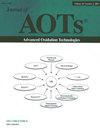Photocatalytic paraquat degradation over TiO2 modified by hydrothermal technique in alkaline solution
Q Chemistry
引用次数: 11
Abstract
Abstract In the present research, titanium nanotubes were synthesized via the soft hydrothermal method. A study on the effect of the synthesizing parameters such as aging temperature and time of the hydrothermal process on the photocatalytic paraquat degradation was explored. Central Composite Design (CCD) was used to determine the influence of the preparation parameter on the optimal condition, main and interaction effects on crystalline size, percent paraquat removal by adsorption and photocatalytic degradation as responses. The XRD pattern of the synthesized nanomaterial reported the anatase phase of titania nanotubes. SEM image of the prepared nanomaterial clearly indicated the agglomerated with tubular structure. Band gap energy of the nanotubes was found lower than that of the pure anatase TiO2. Paraquat removal by adsorption is more effective than by photocatalytic degradation. The error of the model remains insignificant for all the three responses.水热法修饰TiO2光催化降解百草枯
摘要本研究采用软水热法制备钛纳米管。探讨了水热法老化温度、时间等合成参数对光催化降解百草枯的影响。采用中心复合设计(CCD)研究了制备参数对最佳工艺条件的影响、对晶体大小的主效应和交互效应、吸附百草枯去除率和光催化降解率的影响。合成的纳米材料的XRD谱图报道了钛纳米管的锐钛矿相。所制备的纳米材料的SEM图像清晰地显示出球状管状结构。发现纳米管的能带能低于纯锐钛矿TiO2。吸附法去除百草枯比光催化降解法更有效。对于所有三个响应,模型的误差仍然是微不足道的。
本文章由计算机程序翻译,如有差异,请以英文原文为准。
求助全文
约1分钟内获得全文
求助全文
来源期刊
CiteScore
0.88
自引率
0.00%
发文量
0
审稿时长
1 months
期刊介绍:
The Journal of advanced oxidation technologies (AOTs) has been providing an international forum that accepts papers describing basic research and practical applications of these technologies. The Journal has been publishing articles in the form of critical reviews and research papers focused on the science and engineering of AOTs for water, air and soil treatment. Due to the enormous progress in the applications of various chemical and bio-oxidation and reduction processes, the scope of the Journal is now expanded to include submission in these areas so that high quality submission from industry would also be considered for publication. Specifically, the Journal is soliciting submission in the following areas (alphabetical order): -Advanced Oxidation Nanotechnologies -Bio-Oxidation and Reduction Processes -Catalytic Oxidation -Chemical Oxidation and Reduction Processes -Electrochemical Oxidation -Electrohydraulic Discharge, Cavitation & Sonolysis -Electron Beam & Gamma Irradiation -New Photocatalytic Materials and processes -Non-Thermal Plasma -Ozone-based AOTs -Photochemical Degradation Processes -Sub- and Supercritical Water Oxidation -TiO2 Photocatalytic Redox Processes -UV- and Solar Light-based AOTs -Water-Energy (and Food) Nexus of AOTs

 求助内容:
求助内容: 应助结果提醒方式:
应助结果提醒方式:


